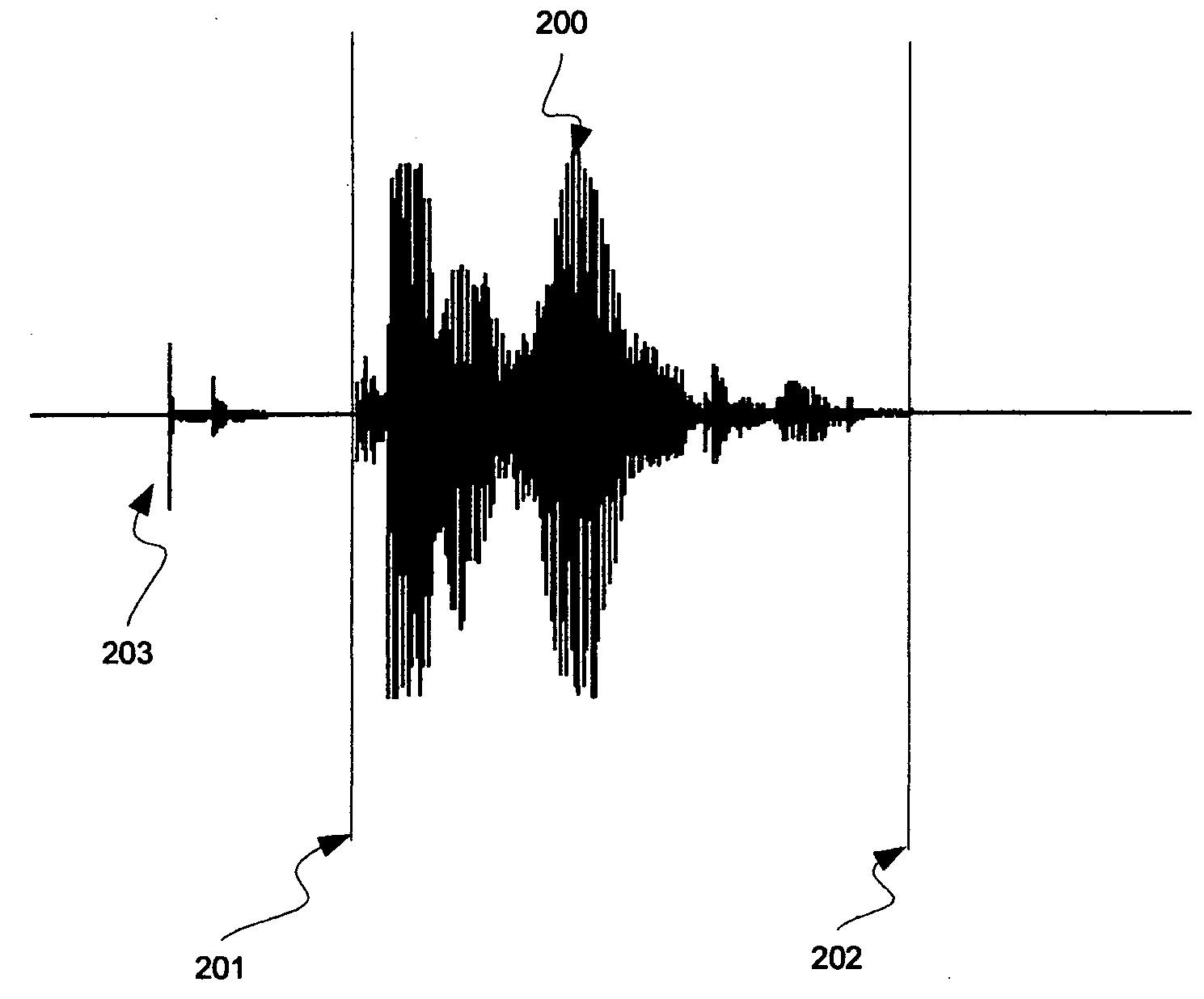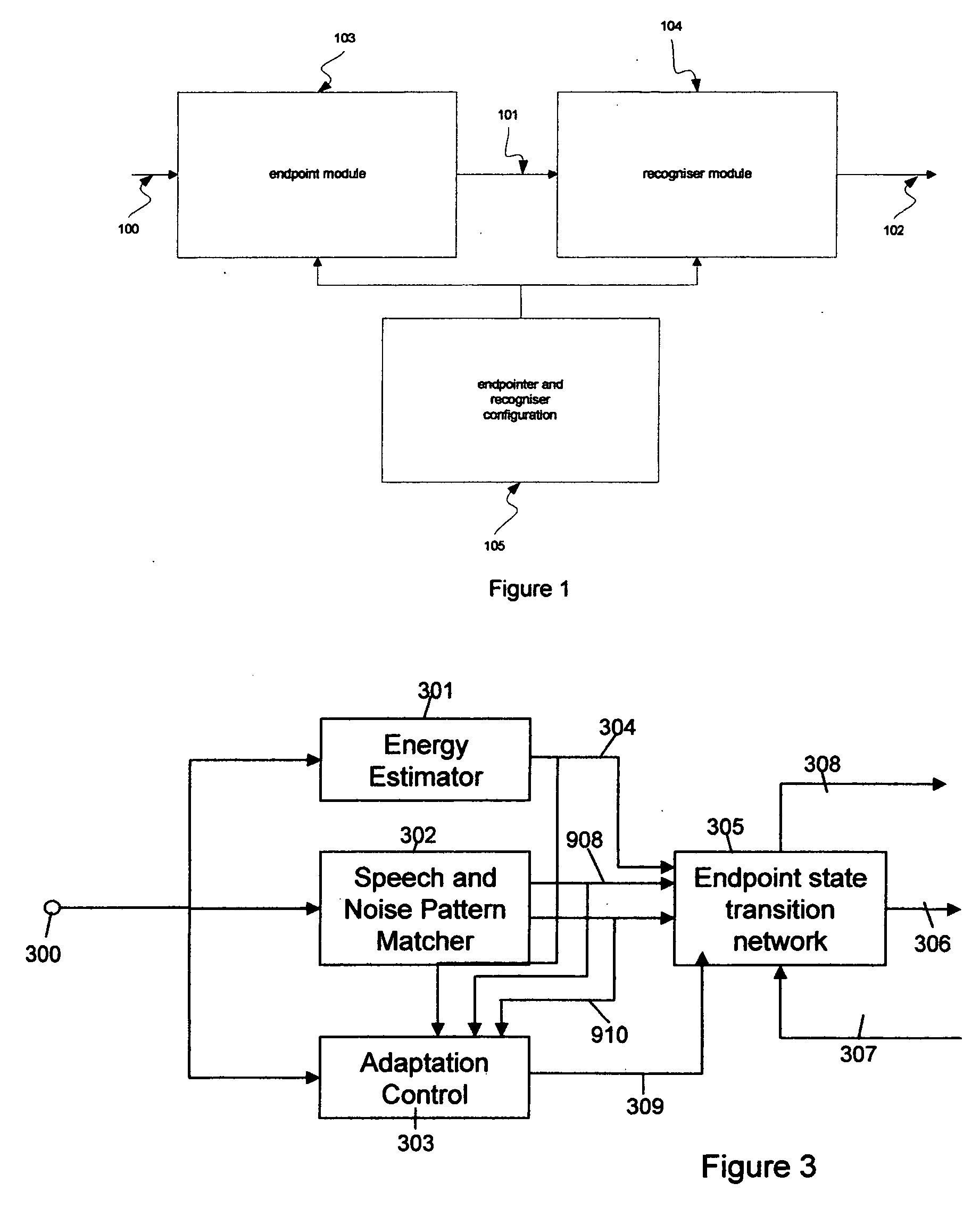Signal end-pointing method and system
- Summary
- Abstract
- Description
- Claims
- Application Information
AI Technical Summary
Benefits of technology
Problems solved by technology
Method used
Image
Examples
Embodiment Construction
[0036] An embodiment of the present invention will now be described with respect to FIGS. 3 to 13.
[0037]FIG. 13 is a block diagram illustrating a computer system which may embody the present invention, and the context in which the computer system may be operated. More particularly, a computer system 1300 which may be conventional in its construction in that it is provided with a central processing unit, memory, long term storage devices such as hard disk drives, CD ROMs, CD-R, CD-RW, DVD ROMs or DVD RAMs, or the like, as well as input and output devices such as keyboards, screens, or other pointing devices, is provided. The computer system 1300 is, as mentioned, provided with a data storage medium 1302, such as a hard disk drive, floppy disk drive, CD ROM, CD-R, CD-RW, DVD ROM or RAM, or the like upon which is stored computer programs arranged to control the operation of the computer system 1300 when executed, as well as other working data. In particular, operating system program 1...
PUM
 Login to View More
Login to View More Abstract
Description
Claims
Application Information
 Login to View More
Login to View More - R&D
- Intellectual Property
- Life Sciences
- Materials
- Tech Scout
- Unparalleled Data Quality
- Higher Quality Content
- 60% Fewer Hallucinations
Browse by: Latest US Patents, China's latest patents, Technical Efficacy Thesaurus, Application Domain, Technology Topic, Popular Technical Reports.
© 2025 PatSnap. All rights reserved.Legal|Privacy policy|Modern Slavery Act Transparency Statement|Sitemap|About US| Contact US: help@patsnap.com



